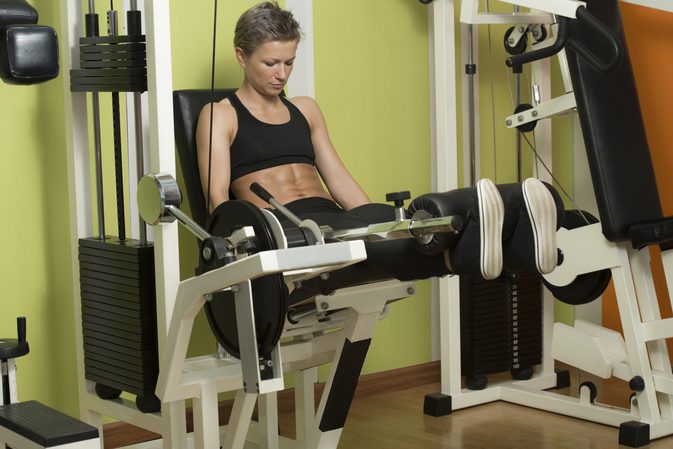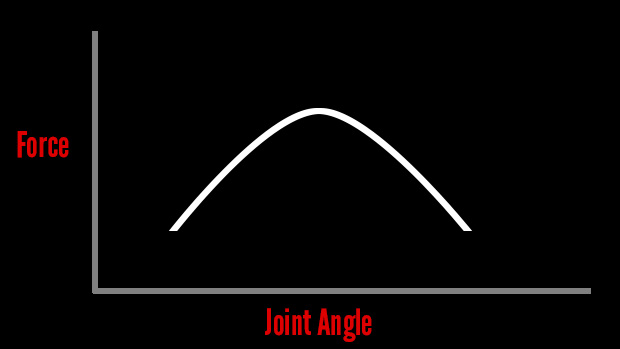In this post we look at the reasons why you should use strength training machines for injury rehab and the disadvantages of both body weight and free weight exercises.

Let me start with a quote (paraphrased) from world leading tendon rehab expert Dr Peter Malliaras.
“When injury rehab isn’t successful, either the patient is not doing the exercise right, doing the wrong exercise, or key progressions in the exercise process are missing. That leads to panic in patients and practitioners alike and alternative approaches are tried.”
Exercise is the key variable in injury rehab. Getting it right is the difference between success and failure.
With that in mind, let’s look at why you should use strength training machines for injury rehab.
Resistance training machines allow you to isolate weak muscles
When injury occurs, there’s a short term adaptation in the central nervous system (CNS). It finds another way to move you in order to off load the injured tissue.
Think of this like rerouting traffic whilst road works are taking place.
Once the works have been completed however, you need to get the road open as soon as possible. If the diversion stays in place for longer than necessary, it may have unintended consequences elsewhere.
This holds true for acute injuries, such as muscle and ligament ruptures and also for chronic injuries like Runner’s knee for example.
Unlike patched up roads however, the injured site and probably other muscles in the area, will require specific attention to get them stronger again.
Think back to the use it or lose it mantra. If your CNS has avoided putting force through an area for a time, it will be weaker.
The genius of your CNS is such that you can continue with your life and even return to your activities without really knowing you have this weakness.
In the runners I see for knee issues for example, many are shocked how weak their quadriceps really are once they’re isolated.
This despite returning to running (albeit with issues) and doing a bunch of so called functional type exercises such as squats and lunges.
See this post for a detailed look at how muscle compensation can influence injury rehab results.
Weak muscles will stay weak unless they are isolated. Strength training machines are the best way to do this.
Progressive overload
This is one of the key principles of strength training and one that’s often overlooked in injury rehab.
Muscles will only adapt as far as they need to. This is an evolutionary effect. Why would your body waste valuable energy improving the strength of muscles if there’s no requirement?
In order to stimulate strength gains, you need to gradually increase the demands imposed.
This takes time. Everybody understands that exercise is a long term process and yet in rehab both patients and practitioners expect immediate results.
It takes around 8 weeks to produce a meaningful change within the structure of a muscle. That’s just the start of the process however.
To get the muscles strong enough to tolerate the activities you enjoy may take longer. Especially if they were weak to begin with.
Body weight exercises aren’t enough
Body weight only exercises have limitations. The most significant is they don’t enable progressive resistance to be applied.
Once you can do 15 leg lifts or whatever, then what? 20? The numbers become meaningless above a certain point as the loads aren’t sufficient to stimulate further change in the muscle.
Strength training machines are designed specifically with this purpose in mind. By using the incremental changes in resistance a weight stack provides, you’re able to progressively challenge the target muscles.
Take advantage of that.
Machines allow you to set and control variables within the exercise
One of the key variables within an exercise is joint range of motion. In other words how far your joints are able to move during the exercise itself.
Injury can leave you with restrictions in motion. Following a knee injury for example, you may not be able to bend one knee as far as the other.
These limits should be respected. It’s unlikely any good will come from breaching them.
Strength training machines allow you to set the parameters of the exercise before you begin.
On a leg press for example you can control how far the platform comes towards you. This allows you to build the exercise precisely around your current status.
The limitations of free weights
The benefits of free weights and barbell training are eulogised everywhere.
Whilst they may be appropriate in certain situations, they have drawbacks, particularly if your primary goal is injury rehabilitation.
Let’s take a deeper look.
Gravity
Gravity means barbells only want to go in one direction, down. This limits which muscles you can challenge and by how much.
For example, how can you provide a meaningful challenge to your knee flexors with a barbell? You can’t.
A straight leg deadlift will only work your hamstrings in a lengthened position. There is no way to challenge these muscles into their shortened range with free weights.
Whilst many people think of a squat as a gold standard exercise, it’s limitations become clear when you look at which muscles it challenges and by how much.
The quadriceps for example receive little stimulus in the top position of this exercise. As you descend towards the ground the challenge increases until it’s maximal in the bottom position.
If you’re a runner this may present an issue.
Which position of knee extension do you need to be strongest? The last 30 degrees. This is where you’ll be asking your quadriceps to work hardest as they decelerate the knee flexion that results from your foot hitting the ground.
A squat will provide very little challenge to this range of motion.
A muscle’s strength curve
The second crucial point is that muscles are stronger in different parts of their operating range. Typically they are weaker in both their short and lengthened position and strongest in the middle of their range.
This represents a bell shaped curve as illustrated below.

Barbells can’t account for this but intelligently designed strength training machines do. These machines will have a cam to vary the resistance according to the target muscle’s strength curve.
For example, a dumbbell lateral raise gets difficult precisely where the muscles of the shoulder get weaker, the top position.
As you raise your arms to the side, the distance between the line of force (always straight down with a dumbbell remember) and the axis (your shoulder joint) gets larger.
The is the reverse of what’s required to optimally challenge the shoulder muscles. A machine like the Med X lateral raise however, is built precisely with that in mind.
This results in a more complete challenge and better results.
The stabiliser muscle myth
It’s suggested that free weights challenge the ‘stabiliser muscles’ more than strength training machines. This is apparently because the path of resistance is not fixed.
Anybody who has attempted a heavy bench press will know this is not true. The path of resistance may not be fixed, but if you decide to push in any other direction other than straight up, you’re going to drop the weight.
When have you ever finished a bench press and noted your rotator cuff muscles were exhausted? Never. Because the stimulus is minimal at best.
If you really want to challenge the stabiliser muscles then the best way to do that is to isolate them as well.
Summary
The debate over the value of machines has been going on ever since their introduction some 40 years ago.
The negativity that surrounds them is based largely on opinion and not science.
This is frustrating because they provide an essential contribution to the injury rehab process. Understanding how to use them will get you back to your activities faster.